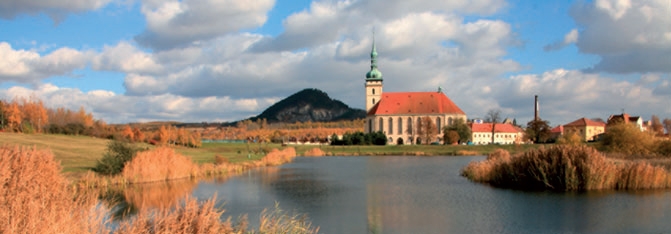
Hněvín Castle, which stands on the hill of the same name, is the dominant landmark in the Northern Bohemian town of Most. It is a replica from the turn of the 19th and 20th centuries, a faithful copy of the castle which stood here from the mid-13th century to the middle of the 17th century, when the townspeople of Most themselves had it torn down. Before that, however, it was the involuntary residence of the famous master alchemist Edward Kelley.
Edward Kelley, originally from England, came to Prague in 1584, where he entered the service of Emperor Rudolf II as the court alchemist. He quickly established himself a leading position amongst the emperor’s courtiers and was later even granted the rank of nobleman. He knew Most and Hněvín Castle back then, as it was the home of his countrywoman, Joanna Weston, who became his wife.
However, his sudden fall came in 1591. Kelley violated the emperor’s ban and killed a court offi - cial called Hunkler in a duel. The emperor therefore had him arrested and imprisoned in Křivoklát Castle. He made a failed attempt to escape, was seriously injured, and lost his leg. It was decided that he would service out his punishment in a more secure prison, in Hněvín Castle in Most. Despite this, he did attempt to escape with the help of his wife. This second attempt again failed, as he broke his remaining leg. He refused to live out the rest of his days as a cripple, and so fi nally took his own life.
Before his death he placed a curse on the town and the castle and prophesised that they would be razed to the ground for the wrongs that had been done to him there. Both these threats eventually came true, although both the castle and the town later re-emerged like the fabled phoenix from the ashes, greater and more glorious than ever before.
www.mesto-most.cz
Nesouhlas se zpracováním Vašich osobních údajů byl zaznamenán.
Váš záznam bude z databáze Vydavatelstvím KAM po Česku s.r.o. vymazán neprodleně, nejpozději však v zákonné lhůtě.